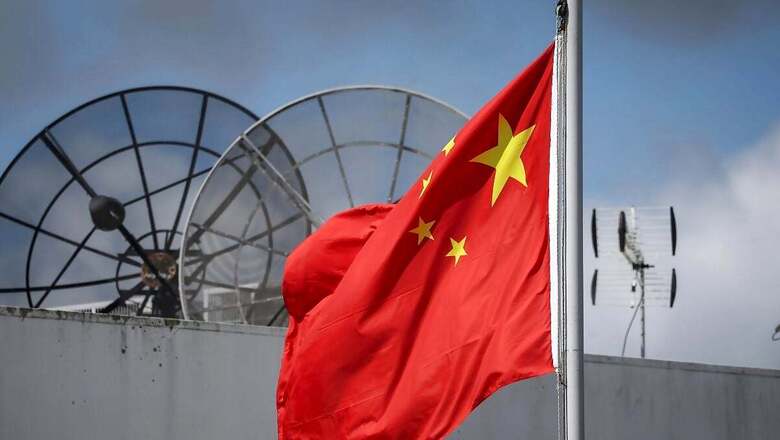
views
Over the past several decades, China has consistently prioritised modernising its military forces and achieving self-reliance. It is now ranked as the world’s second-largest spender on military. Notably, between 2019 and 2023, China reduced its military imports by 44 per cent compared to the previous five years. It has also emerged as one of the top five major arms exporters. According to the Stockholm International Peace Research Institute, China’s arms sales have significantly increased, particularly in the Asia-Oceania region, which accounts for over 80 per cent of the area’s total weapons trade.
Most Chinese military exports are directed to its Asian neighbours, such as Pakistan, Bangladesh, and Myanmar, which together have received over 63 per cent of China’s conventional weapons sales since 2010. Pakistan, in particular, has been the main recipient of Chinese military hardware and technologies since 1991, receiving 38 per cent of China’s total arms exports between 2016 and 2022. Recently, Chinese arms sales have also expanded in numerous African countries, which purchased approximately 19 per cent of China’s total exports from 2010 to 2020. Additionally, the West Asian Region has seen a rise in Chinese arms trade alongside economic and infrastructure investments, driven by many West Asian countries’ efforts to reduce their reliance on the United States.
China’s rise in the global arms trade has been facilitated by the economic and geostrategic needs of recipient countries. The competitive pricing of Chinese armaments and technologies is particularly appealing to developing nations seeking affordability. Furthermore, the growth of Chinese arms exports aligns with the expansion of the Belt and Road Initiative (BRI), a global infrastructural development project that reflects China’s strategic ambitions.
Nonetheless, these attractive defence agreements with China come with hidden drawbacks, prompting many countries to reconsider their choices. Statistics from SIPRI indicate that Chinese arms exports declined by 7.8 per cent from 2016-2020 compared to the previous five years. This wasn’t merely due to Covid-19 but there were several other factors that contributed to this significant decline. Chinese military exports, which are technologically inferior and have lower certification standards than their Western counterparts, impose substantial after-sales service costs on buyers.
Countries purchasing Chinese weapons often face issues of technological incompatibility, lacking the personnel and expertise needed to operate, repair, or maintain the equipment. In many instances, the high maintenance and repair costs demanded by China undermine the initial appeal of lower prices. Additionally, the untested nature of Chinese weaponry in combat raises concerns about their utility, effectiveness, and reliability.
Chinese arms in Pakistan
Numerous instances demonstrate the pitfalls of importing military equipment from China. For example, Pakistan, a frequent buyer of Chinese arms, faced serious issues with the Chinese-made F-22P frigates it ordered in 2005. These naval warships were equipped with substandard engines, and their air defence missile systems had defective imaging sensors and radar, making them ineffective. When China refused to repair the frigates, Pakistan had to seek assistance from Turkey. Similarly, Pakistan had to ground Chinese-built Unmanned Aerial Systems (UAS) combat drones shortly after their deployment due to major faults, including unusable spare parts and the incompetence of the Chinese engineers sent to operate them.
Chinese defence equipment in Bangladesh
Bangladesh, another significant recipient of Chinese defence equipment, faced issues with outdated Ming class Type 035G submarines, which were technologically so deficient they had to be declared unserviceable for an extended period. In 2020, Chinese-made 053H3 frigates arrived in Bangladesh with several defects, including malfunctioning navigation radar and gun systems. Additionally, the Bangladesh Air Force (BAF) experienced technical problems with Chinese-manufactured F-7 fighter jets and K-8W light attack aircraft, the latter of which failed to fire ammunition correctly. The BAF also had to return Chinese-built Y12 and MA60 transport aircraft due to various issues.
Chinese arms malfunction across the globe
When Myanmar acquired JF-17 fighter jets, co-produced by China and Pakistan, they were disappointed to discover that most were unfit for service due to significant technological malfunctions. In 2019, Jordan attempted to resell six Chinese-made CH-4B ‘Pterosaur’ Unmanned Aerial Vehicles (UAVs) after expressing dissatisfaction with their performance. Nigeria’s purchase of 15 Chengdu F-7 fighter jets from China resulted in considerable losses, with 5-6 jets lost in accidents and 7 returned to China for maintenance due to operational issues, leaving only 2 in service. Similarly, Sudan faced issues with poorly equipped weaponry when two pilots died in a crash involving China and Pakistan-produced K-8 Karakorum light attack aircraft in September 2021. Additionally, Kenyan security forces questioned the reliability of Norinco VN-4 armoured personnel carriers acquired from China, as many Kenyan personnel were killed in terrorist attacks while using them.
The aforementioned instances illustrate the significant costs of prioritising economic and strategic considerations over quality when purchasing military equipment. Besides increasing the financial burden on buyers, these case studies show that unreliable defence hardware undermines military capabilities and readiness, compromising national security. The loss of lives due to untested and inferior Chinese equipment highlights the need for stringent quality checks and third-party verification mechanisms to be adopted by all those who are attracted towards ‘cheap’ Chinese defence equipment.
It is crucial for countries to diversify their sources of military equipment rather than relying heavily on a single supplier. Weapons produced by the US and other Western countries exhibit excellent quality, being tested against standards collaboratively established by NATO nations. Developing countries can adopt this framework to build alliances and collaboratively strengthen their defence strategies, thereby avoiding exploitation and deception by a single country.
The writer is an author and columnist and has written several books. His X handle is @ArunAnandLive. Views expressed in the above piece are personal and solely those of the author. They do not necessarily reflect News18’s views.




















Comments
0 comment